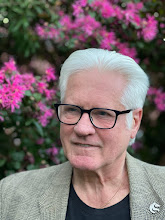Over on ScienceBlogs, Chris Mooney is publishing this interesting series of posts on his blog, The Intersection, backed up by co-blogger Sheril Kirshenbaum.
All these posts, together with the discussion they've generated, are still just a small part of the current debate on the merits of "framing" science: trying to make the conclusions of mainstream science more salient and appealing to various audiences.
Mooney, who has been one of the main supporters of arch-framer Matt Nisbet, is now acknowledging that Nisbet blundered when he recently called for Richard Dawkins and PZ Myers to stop talking in public about science.
As it strikes me, the kerfuffle is not so much about, "Is there a role for professional PR/communications techniques when presenting science to the public?" Almost everyone agrees that there should be some role for some people to use such techniques to some extent at least some of the time. The issue has become, more specifically, "Should Dawkins and PZ (and other atheists whose beliefs have been influenced by their understanding of scientific theory) basically shut up, since their message is cutting across Matt Nisbet's suggested PR strategy for organised (American) science?"
That brilliant proposal has, of course, been met with a resoundingly negative response from the ScienceBlogs community and the broader science-oriented blogosphere.
Dawkins and Myers have a message of their own, which they actually frame very well in their different ways. However, it's not their mission to make science palatable to various existing American demographics, complete with all their existing values and religious beliefs. They don't seek to take current demographics as they find them and try to be more popular.
Rather, Dawkins and Myers want to change people's beliefs if they can. This is a long-term project that involves, among other things, publishing the arguments against religion in an accessible, popular format; creating an environment in which other voices of disbelief can get a hearing; building more communities and networks, and a greater sense of camaraderie, among non-believers; making atheism seem more ... well, cool, and more like a socially-available and acceptable option; getting at least some believers to become more sceptical about what religious leaders say; getting more of the large uncommitted block, the people who don't feel strongly about religion one way or the other, to be that little bit less deferential to religious traditions and sensitivities; etc., etc.
It seems to me that Dawkins and Myers (and others) are doing a good job at a large and difficult task that no one person is leading or coordinating. To be fair, however, I can also see how their work cuts to some extent across what Nisbet is trying to do. Nisbet points out, correctly, that there's a potential for Dawkins, Myers, and other atheistic scientists to scare many Americans away from science if science is thought to undermine religious faith.
But the lesson is not that Dawkins and Myers - or anyone else - should shut up. It's that Nisbet has to find a way to work in a world that contains people like Dawkins and Myers - who have every right to pursue their own objectives in their own manner. None of us can have things all our own way; the world is full of messy compromises, and any realistic PR or communications strategy will need to take that into account.

1 comment:
Hi Russell. John Wilkins has a good post about this issue too. Great minds and all that.
El Misterioso.
Post a Comment